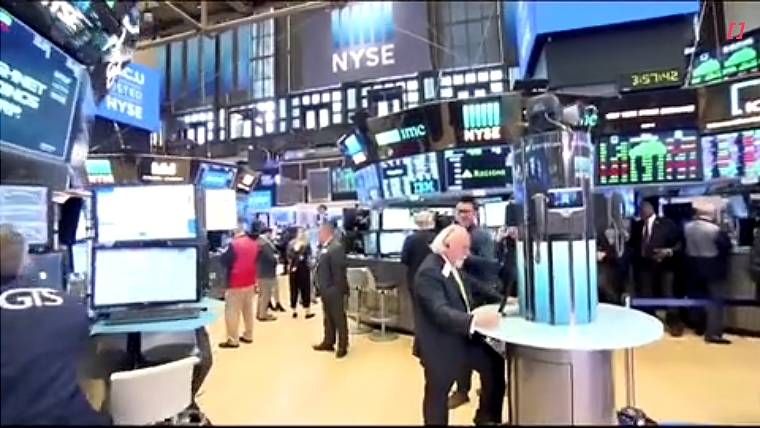
An in-line US CPI report and a jump in initial jobless claims drove lower US rates and a weaker USD, with the 10-year rate dipping below 4% at its low for the day. The record-breaking run for US equities has continued. NZD/USD has recovered to 0.5975 and is higher on the key crosses apart from a further nudge down in NZD/AUD.
US CPI inflation data were close to market expectations, with the core measure up 0.3% m/m, leaving annual inflation at 3.1%. A 0.4% m/m lift in the headline rate resulted in the annual figure rising two tenths to 2.9%. The impact of tariffs was evident, with goods prices rising 0.3% m/m, matching the largest increase since May 2023. However, the passthrough of higher tariffs into CPI inflation has been slow and Pantheon Macroeconomics estimates that only about a third of the expected impact has occurred.
Some services CPI components were stronger, with rents above their recent trend, and strong gains in discretionary items like airfares and accommodation services, but broader gains were not evident. Adding in data from the benign PPI data released yesterday, estimates for the core PCE deflator – the Fed’s preferred inflation target – are 0.2% m/m, leaving annual inflation at 2.9% or edging up to 3.0%, depending on rounding.
Initial jobless claims surged 27k last week to a near four-year high of 263k last week, against expectations for a flat result. The figure was boosted by an unusual 15k gain for Texas, while claims fell in the majority states. Thus, the headline figure likely overstates the weakness in the US labour market, but the data follows the numerous indicators released last week that highlighted the softer US labour market conditions.
The combination of a not-too-hot CPI and jump in jobless claims drove down US rates, with the market taking the view that the weaker labour market data is a better guide to the policy outlook than the temporary lift in inflation.
US Treasury yields fell to fresh five-month lows, edging closer to the Liberation Day rates, before the market settled. Rates are down 2-4bps for the day, with a curve flattening bias. The largest fall was for the 30-year rate, now down to 4.65%, with the bond auction going well despite falling rates into the event – fears about the sustainability of fiscal policy and Fed independence, which saw the bond reach 5% last week, have evaporated this week.
The 10-year rate fell to 3.99% at its overnight low and has since settled at 4.01%, down 3bps for the day. The market fully priced three rate cuts this year for the remaining three meetings, and pricing has since pared to 73bps. The prospect of a series of rate cuts continues to support the equity market, with the S&P500 currently up 0.8% to a fresh record high, with the economically sensitive sectors showing some of the largest gains.
As expected, the ECB left its policy rates unchanged for a second consecutive meeting. Updated inflation projections were similar compared to three months ago, with headline CPI expected to average 1.7% next year and 1.9% in 2027 and core figures of 1.9% and 1.8% respectively. ECB President Lagarde said risks to economic growth have become more balanced and the outlook for inflation remains more uncertain than usual. Both the statement and her comments conveyed a neutral policy bias.
The usual post-meeting sourced report from Bloomberg said that ECB policymakers are convinced that no further interest rate cuts are needed to deliver 2% inflation, despite the projected undershoot over the next two years.
The market is largely onboard with that view although rates nudged higher across Europe, driven by the short end. The market only sees a modest chance of a further rate cut over the next six months. The curve flattened, with Germany’s 2-year rate is up 3bps for the day, against a flat 10-year rate.
In the currency market the USD showed broadly based falls, driven by lower US rates. The NZD and AUD have been the top performers. The AUD has shaken off previous resistance levels and risen to a ten-month high of 0.6665. The NZD has recovered to 0.5975 and NZD/AUD has nudged down to 0.8970, after revisiting last week’s low of 0.8963.
Other major currencies have made smaller gains against the USD, with the EUR not showing any outperformance from the slightly more hawkish ECB policy update, so the NZD is higher on all the other key crosses. NZD/GBP has recovered to a 0.44 handle and NZD/EUR is edging back up towards 0.51. NZD/JPY is just shy of 88.
Global forces drove down NZ rates yesterday and resulted in a flatter curve. Both NZGBs and swap rates fell 2-4bps across the curve. The 4bps fall in the 10-year NZGB to 4.30% took it down to its lowest level this year while the 10-year swap at 3.83% was the lowest close in nearly a year.
In the day ahead NZ PMI and electronic card transactions data will be released. UK monthly GDP and US consumer sentiment data will be released tonight.

We welcome your comments below. If you are not already registered, please register to comment.
Remember we welcome robust, respectful and insightful debate. We don't welcome abusive or defamatory comments and will de-register those repeatedly making such comments. Our current comment policy is here.